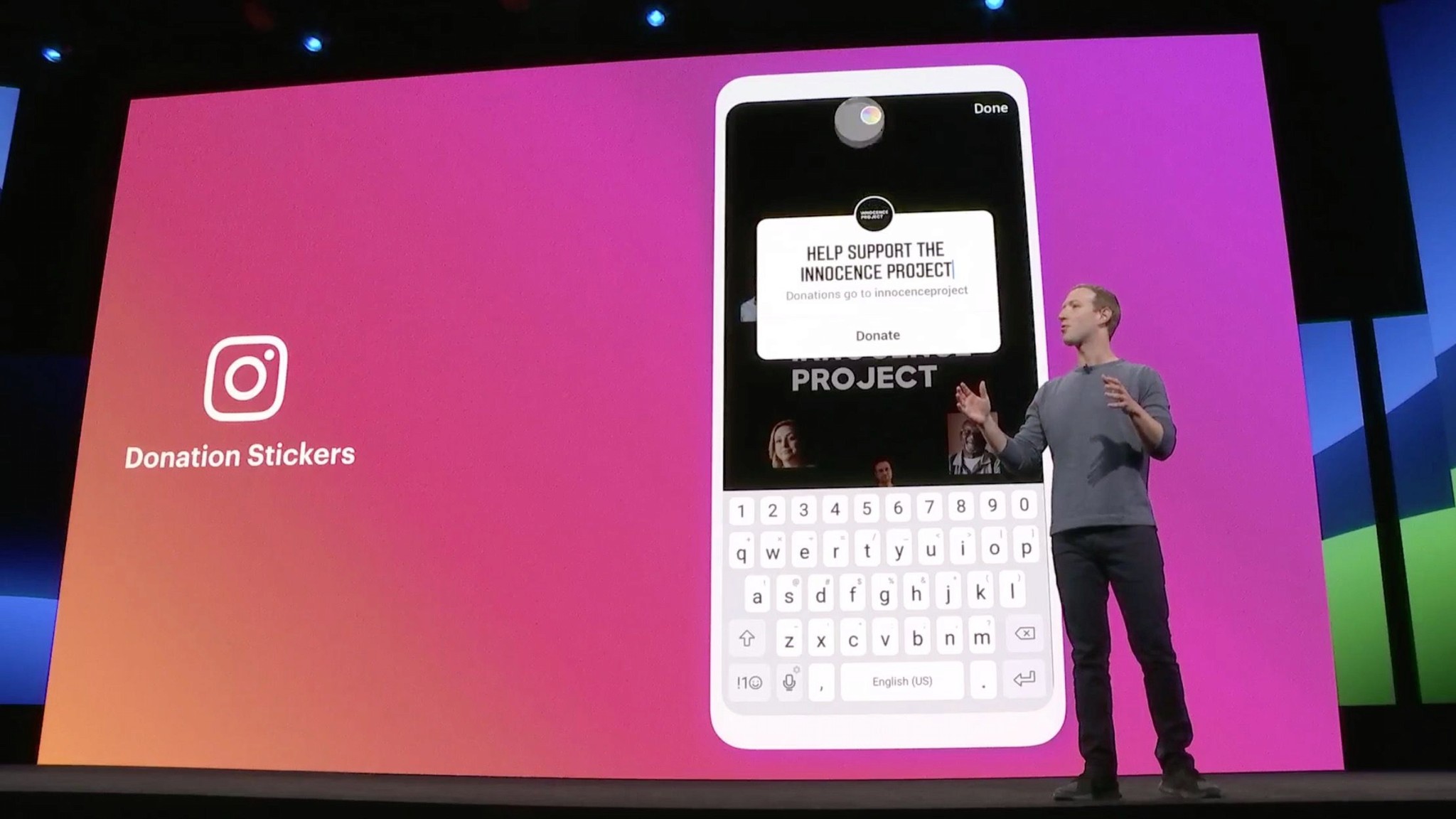Instagram Fundraisers
In 2018 activism was becoming more common on Instagram. People were sharing news stories, volunteer opportunities, and information about nonprofits. The problem we wanted to solve was the friction between seeing an inspiring post and having a clear next step to support that cause.
We started with a simple donation sticker for Instagram Stories. We saw that Stories was the primary place where people were discussing important causes and it also had the most flexible feature set.
After launching the Donation Sticker, we saw the need for a more permanent home while someone was running a fundraiser.
People often go directly to a nonprofit's Instagram profile to learn how they can help and find ways to donate. This felt like an obvious place to meet people where they were.


Mark Zuckerberg on stage at f8 in 2019 announcing the launch of the donation sticker